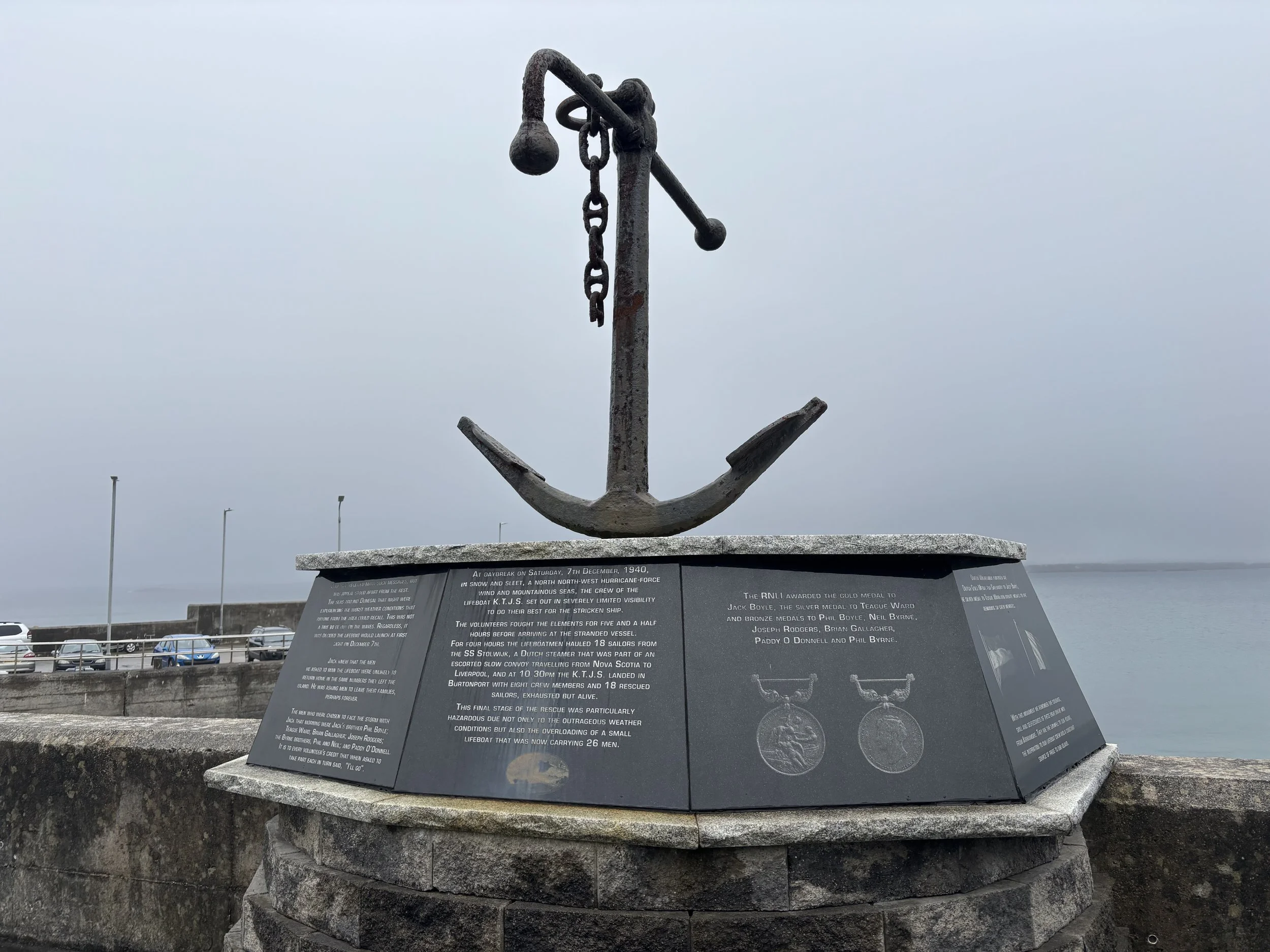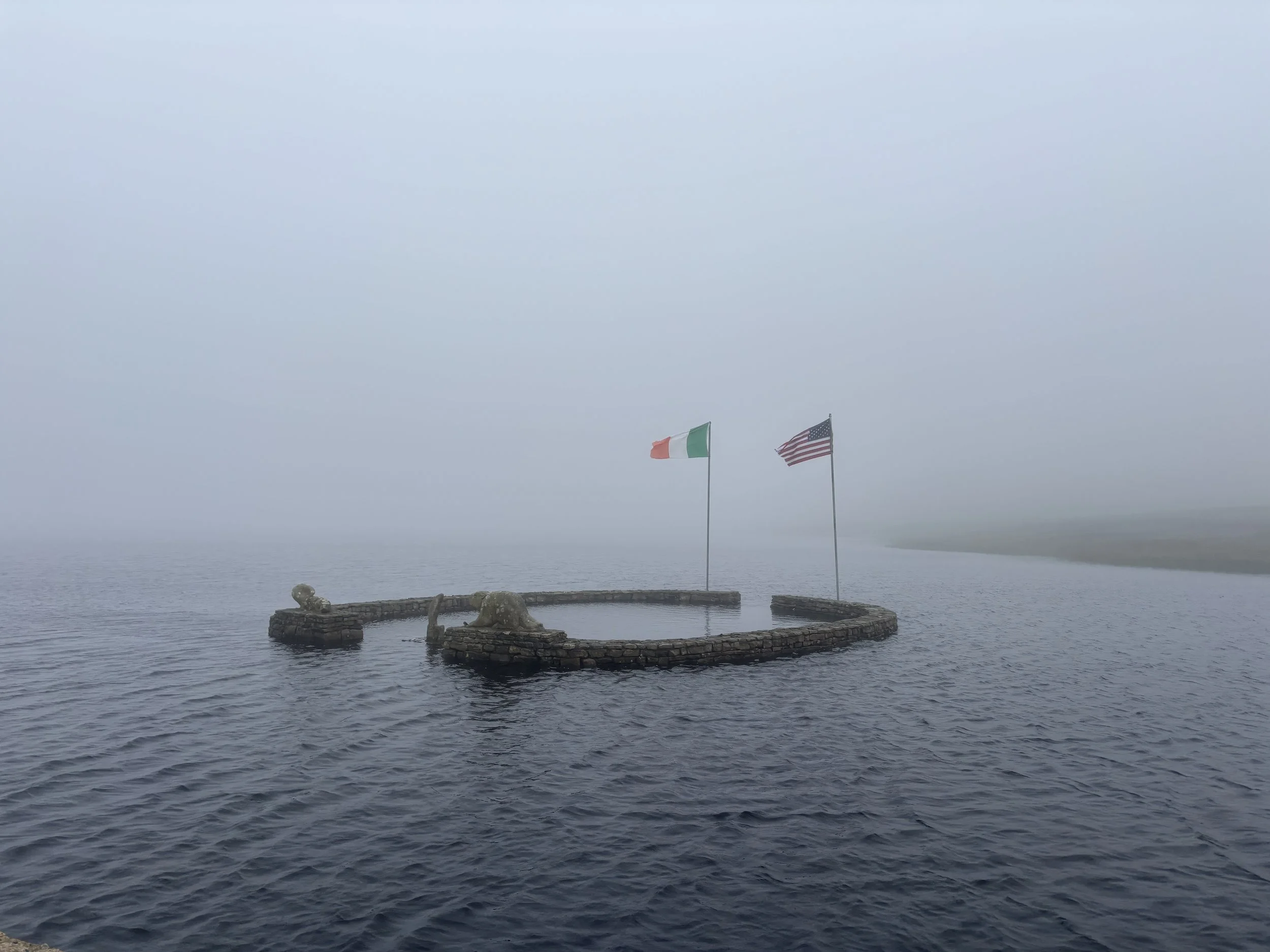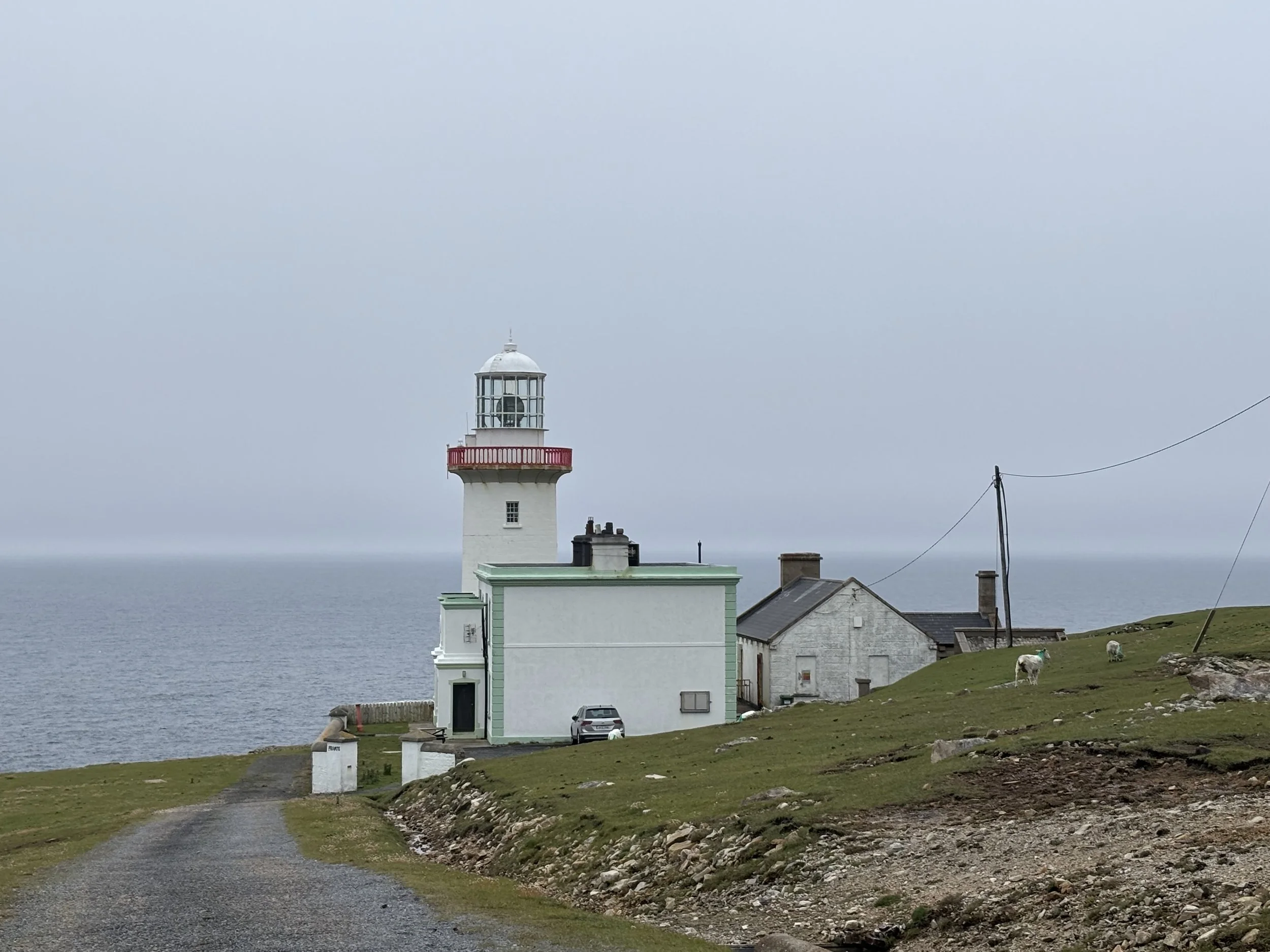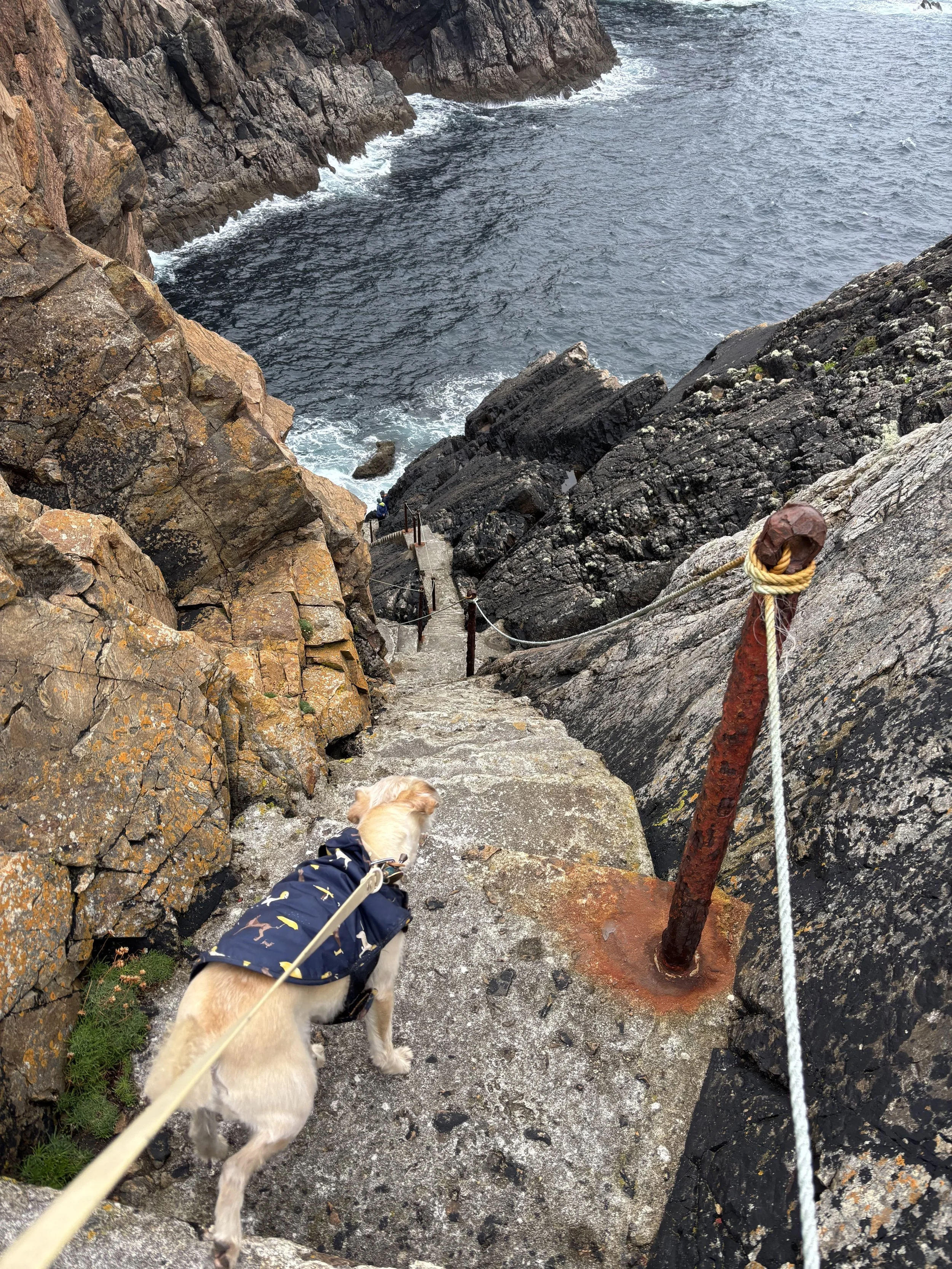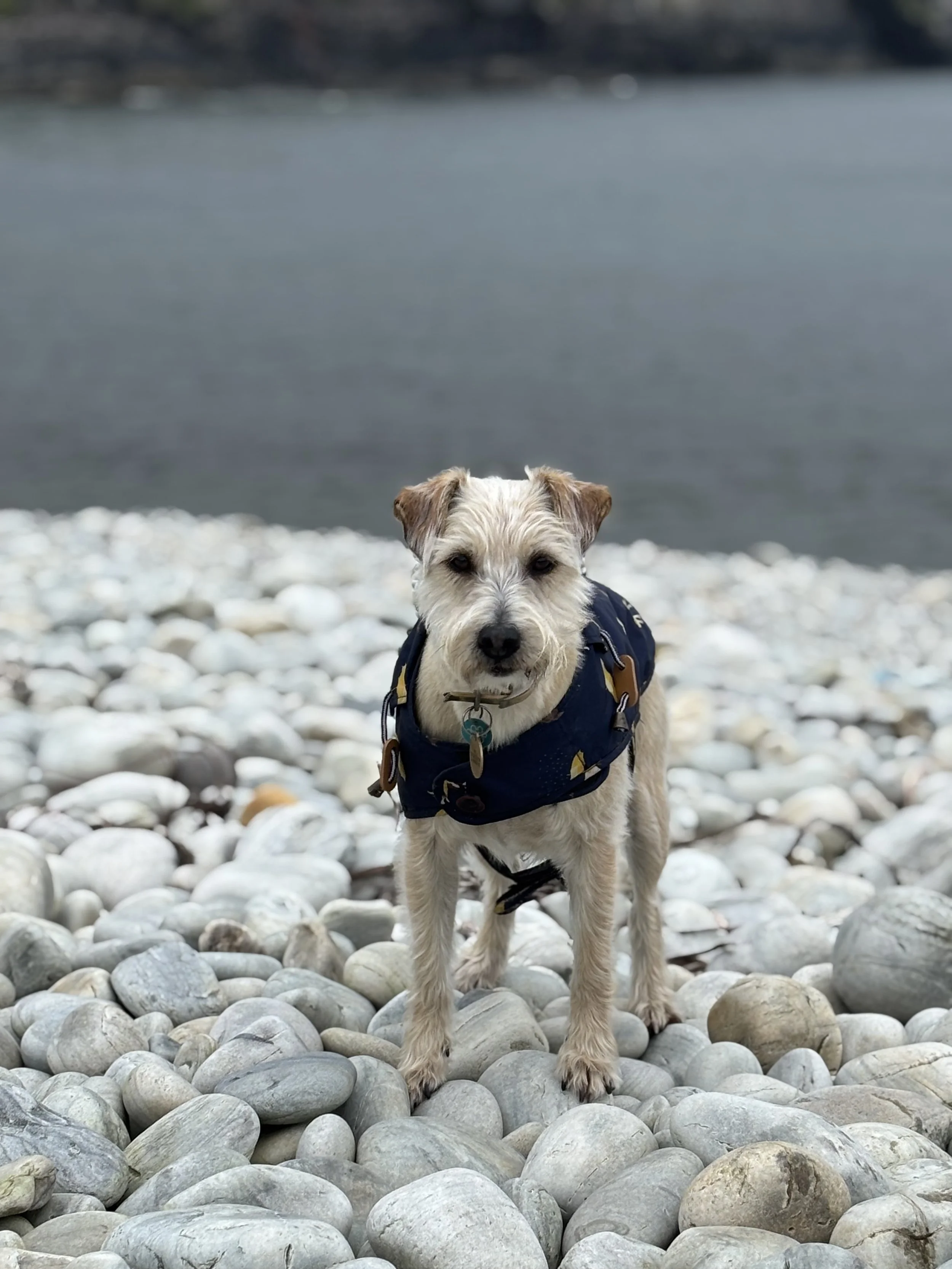Arranmore Island, Co. Donegal
You may recall a viral article from a few years ago, offering money as an incentive for people to move to a remote Irish island to restore its dwindling population? That was Arranmore Island, the next stop on our Donegal roadtrip. We have no plans to live there though.
Credit: Lukassek, Adobe Images
Ferries to Arranmore depart frequently from Burtonport. There are two (rival) companies, known as the red and blue ferries. I didn’t realise this, and just happened to book the red. Apparently the blue is a newer company with slightly nicer ships. We went out at 12pm and returned on the 5.30pm crossing, which was about the right amount of time needed. I took my car, which was a good decision. This meant I could have my guided walk to learn about the island and then take my car to visit the sights which I had learned about.
Denis from Arranmore Guided Tours met me as I disembarked the ferry, and we spent the next 2 hours walking a loop in the south-east of the island. Denis was born and bred on the island, but has done plenty of travelling throughout his life too. As we walked along the quiet roads (meeting the odd sheep), he shared stories from the island’s history, such as the Arranmore Disaster of 1935, when a boat carrying 15 islanders, 8 from the same family, struck rocks. Only Patrick Gallagher, from the large family on-board, survived.
Denis also spoke of the folklore of the 3 sea stacks, said to be a pagan sister and two brothers who were turned to stone by St. Colmcille, and the story behind the Cave of Slaughter, where 70 women and children were killed by British captain Conyngham in 1641. He explained how the island had changed hands through the years. When the Belfast lawyer John Stoupe Charley arrived and built Glen House (now a hotel) in 1855, he evicted many tenants to Boston. After his death, the Irish commission took over the island.
Credit: The Glen Hotel
Following emigration from the island, due to famine and evictions, some islanders settled on Beaver Island in Lake Michigan. Today, Arranmore is twinned with Beaver Island, and a monument commemorating this connection sits in the reservoir.
Amenities are constantly improving on Arranmore - high speed broadband is being installed across the island and now Denis orders his grocery delivery from the mainland via an app. The weather was misty during our walk, but Denis informed me that usually the views over to the mainland are spectacular, and you can even see Mt. Errigal.
After bidding Denis goodbye, I stopped for a coffee at The Dock café, before Rita and I set off on a drive to take in the rest of the island. We visited the Old Graveyard on the hill, which was given to islanders in 1725 to bury their dead following the tragic drowning of nine people on their way to a funeral on the mainland. The main attraction on Arranmore is the lighthouse which, when built, was the first functioning one in Co. Donegal. While tourists aren’t permitted inside the lighthouse grounds, you can get a good look at it and the derelict coastguard’s station, and it’s worth venturing down to the steep stone steps once used for oil deliveries. They’re quite crumbling and slippery toward the bottom, so we didn’t go all the way — but even standing at the top gives you a sense of the ruggedness and resilience needed to live there.
There are also plenty of beautiful sandy and stoney beaches surrounded by impressive scenery around the island, so we stopped off at a few of these and Rita had a run about.


